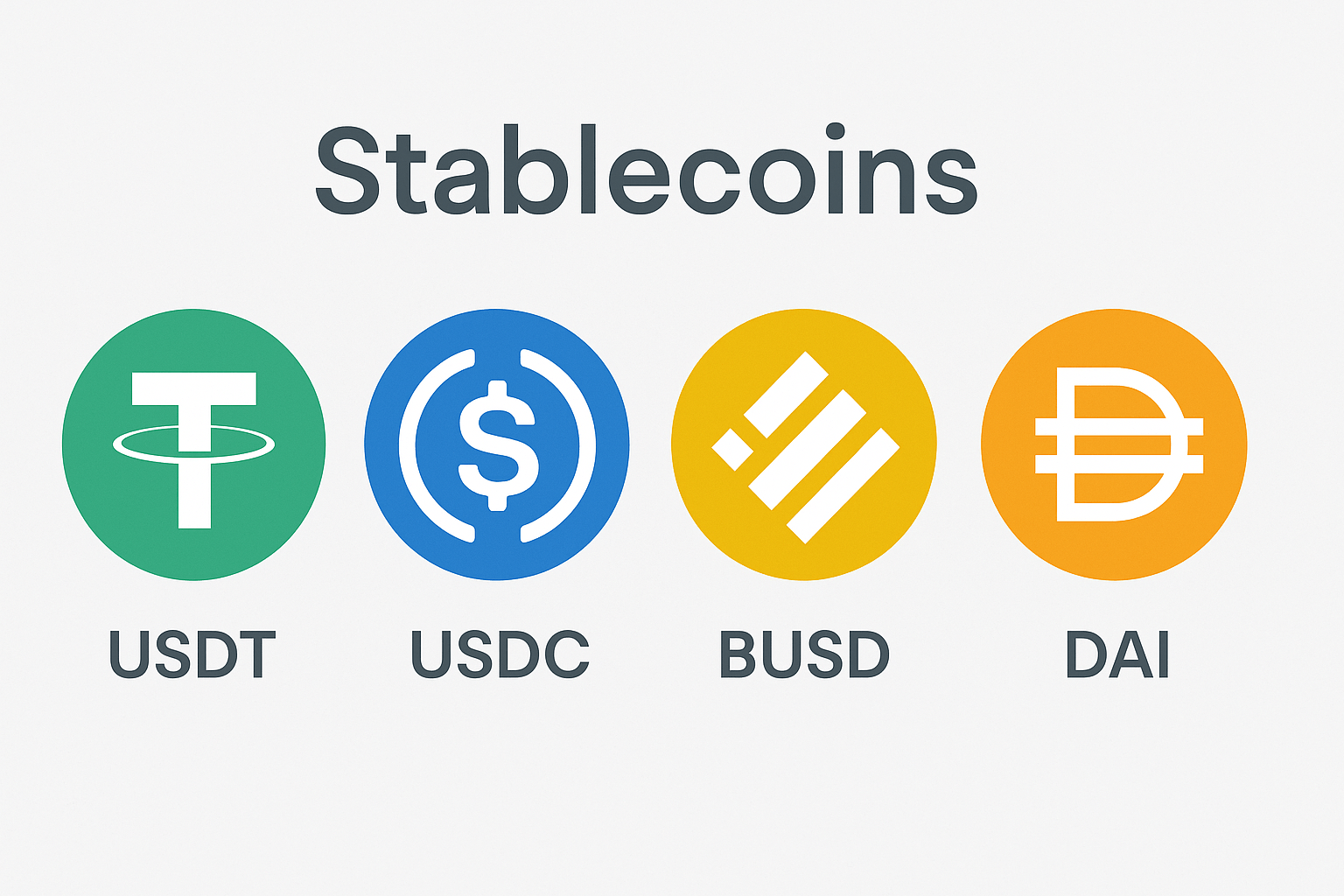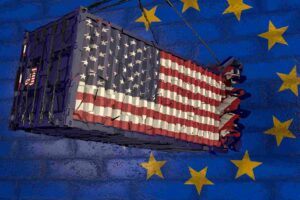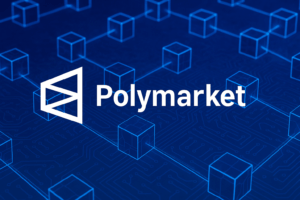Stablecoins have become a central component of the crypto economy. They combine the advantages of blockchain technology with the stability of traditional currencies. In this comprehensive editorial for CoinPro.ch, you will learn everything you need to know about stablecoins: their history, functionality, risks, opportunities, and the most important projects on the market.
What are Stablecoins?
Stablecoins are cryptocurrencies whose value is tied to a stable asset – usually fiat currencies such as the US dollar, the euro, or commodities such as gold. They are designed to offset the volatility of traditional cryptocurrencies such as Bitcoin or Ethereum. Key features:
- Price stability
- Transparency through blockchain technology
- Fast transactions and low costs
Stablecoins are the link between the traditional financial world and the decentralized blockchain world. – Nic Carter, Castle Island Ventures
The History of Stablecoins
The idea of a stable digital currency arose in response to the high volatility of classic cryptos. Early on, projects such as BitUSD (2014) and NuBits attempted to achieve price stability through algorithmic or secured models. Milestones:
- 2014: Launch of BitUSD on the BitShares platform
- 2015: Launch of Tether (USDT) – the first major stablecoin
- 2017–2020: DeFi boom brings stablecoins like DAI into focus
- 2021–2023: Rise of USDC, BUSD, UST (Terra)
- 2022: Collapse of TerraUSD (UST) sparks regulatory debates worldwide (more on this)
How Do Stablecoins Work? The Technology behind It
Stablecoins differ in their functionality, depending on the mechanism for price stability. The three main types:
Fiat-backed Stablecoins
These are backed by deposits in traditional currencies held in bank accounts. Examples:
- Tether (USDT)
- USD Coin (USDC)
- TrueUSD (TUSD)
Crypto-backed Stablecoins
These use cryptocurrencies as collateral, usually via smart contracts with over-collateralization. Examples:
- DAI (backed by ETH, USDC, etc.)
- sUSD (from Synthetix)
Algorithmic Stablecoins
These regulate the price through supply and demand adjustments via smart contracts, without direct collateral. Examples:
- (formerly) TerraUSD (UST)
- Frax (partially algorithmic)
Not all stablecoins are equally stable – the underlying mechanics determine security and function. – Sam Kazemian, founder of Frax Finance
The most Important Stablecoins in Comparison

Tether (USDT)
- Market leader by market capitalization with over $100 billion in circulation (as of May 2025)
- Pegged to the US dollar (1 USDT ≈ 1 USD)
- Reserves include, among other things, US government bonds, cash, corporate bonds
- Publisher: Tether Ltd., based in the British Virgin Islands
- The lack of transparency in the reserves has been criticized, but there are now regular audits (source: Tether Transparency)
USD Coin (USDC)
- Published by Circle in partnership with Coinbase
- Fully backed by US dollars in bank accounts
- Regulatorily registered and auditable in the USA – monthly accountability reports
- Often the first choice for institutional investors
- Supported on Ethereum, Solana, Avalanche, Polygon, etc.
- Monthly audited reserves, high transparency (source: Circle Transparency Reports)
DAI
- Decentralized stablecoin from MakerDAO, backed by crypto assets such as ETH and USDC
- Over-collateralization through smart contracts (Collateralized Debt Positions, CDPs)
- Governance is carried out via the MKR token>
- DAI is a prime example of DeFi innovation
- More volatile during market turbulence, as hedging is carried out using volatile assets
- Governance by the MakerDAO community (source: MakerDAO Docs)
TrueUSD (TUSD)
- Real-time transparency of bank reserves (source: TrustExplorer)
- Fully backed by USD, with real-time transparency via third-party providers (source: TrustExplorer)
- Uses smart contracts for custody and management
- Has been resold several times, most recently in 2023 to a Chinese consortium
- Frequently used on Asian exchanges such as Binance
- Is partially secured by automated mechanisms with proof-of-reserve
EURC (Formerly EUROC)
- Stablecoin from Circle that maps the euro
- Available on Ethereum since 2022, 1:1 backed by euro balances in EU bank accounts
- Response to the demand for euro-based digital assets in the DeFi sector
- Supports DeFi staking pools in euros, e.g. on Aave
- Used primarily by European users and companies
Binance USD (BUSD)
- A stablecoin that is pegged 1:1 to the US dollar
- Issued in cooperation between Binance and the US-regulated company Paxos Trust Company
- Was fully regulated by the New York Department of Financial Services (NYDFS) until the beginning of 2023
- Reserve coverage entirely in cash and short-term US government bonds – with monthly audit reports (source: Paxos Transparency Reports)
- Known for high liquidity on the Binance platform and as the main stablecoin in the Binance ecosystem
- At the beginning of 2023, Paxos announced, on the instructions of the NYDFS, that it would no longer mint new BUSD, but existing tokens will remain valid and redeemable
- Usage has declined sharply since then, but it is still relevant as a historically significant example of regulatory intervention in the stablecoin market
What Happened to TerraUSD?
- In May 2022, UST lost its 1:1 peg to the US dollar.
- Panic selling, liquidity problems, and a fatal spiral between the token burn of UST and the minting of LUNA caused both tokens to crash massively.
- Over $45 billion in market value was destroyed in a few days.
- Many investors lost their entire capital, and DeFi platforms and CEXs were also affected.
- The incident has been described as the “Lehman moment of the crypto industry”.
- “The Terra crash has shown us what happens when complex systems are scaled without real security.” – Vitalik Buterin, Ethereum co-founder
Opportunities and Potential of Stablecoins
Stablecoins not only offer a stable bridge between fiat money and cryptocurrencies, but also open up completely new possibilities in the digital financial world. They are considered the backbone of the DeFi ecosystem and, in the long term, could even revolutionize classic payment transactions, international transfers and earnings models such as staking or lending.
“Trust is more important than technology for stablecoins.” – Caitlin Long, founder of Custodia Bank
1. Secure Alternative to the Volatility of Cryptocurrencies
The high volatility of Bitcoin, Ethereum and Co. is an obstacle for many users. Stablecoins such as USDC or DAI, on the other hand, offer a “safe haven”:
- Price peg to fiat currencies such as the US dollar or euro offers predictability
- Ideal for savings plans and payment applications, e.g. salary payments in Web3 companies
- Protection against inflation risks in unstable economies (e.g. Turkey, Argentina)
2. Staking and Interest Income with Stablecoins
A particularly interesting application is so-called stablecoin staking – stablecoins are “locked in” smart contracts to generate returns:
- Platforms such as Aave, Compound, Curve or Yearn Finance enable interest rates between 2% and over 10% per year
- Centralized providers such as crypto exchanges Binance or bitvavo or formerly Celsius offered comparable programs – but sometimes without sufficient transparency (or as in the case of Celsius, where the deposits were lost)
- Advantage over classic savings books: higher returns, no volatility
- Risk: smart contract errors or platform bankruptcies, as occurred e.g. B. at Celsius in 2022
“Stablecoins are the heart of earnings models in DeFi – without them there is no real passive income.” – Stani Kulechov, founder of Aave
3. Cross-border Payments and Remittances
Stablecoins offer great potential for cross-border payments:
- Transactions are possible almost in real time and at a fraction of the cost of traditional banks.
- Particularly valuable for developing countries, where many people do not have a bank account but have access to smartphones.
- Projects like Stellar and Celo are specifically focused on these use cases.
- Example: A transfer of $500 USD from Germany to Nigeria via Western Union costs up to 10%, with USDC on the Stellar blockchain under 0.1%.
4. Onboarding in Crypto & DeFi
Stablecoins lower the barriers to entry:
- Easier entry for beginners, as there is no risk from price fluctuations.
- Often the first step to get to know decentralized applications.
- Increasingly accepted as a means of payment in online shops.
5. Programmable Money and Smart Contracts
Stablecoins are ideal for automated payments through smart contracts:
- Wage payments, dividends, crowdfunding – everything can be automated.
- Enables new business models in the area of Decentralized Autonomous Organizations (DAOs).
- Combination with NFTs, Real-World Assets (e.g. real estate) and supply chain solutions conceivable.
Risks and Challenges of Stablecoins
Despite their stability and the many opportunities, stablecoins are not a risk-free investment. Depending on the type, hedging mechanism and regulatory framework, there are different weaknesses – some of which have already had serious consequences, as the TerraUSD (UST) case has drastically shown.
1. Centralization & Counterparty Risk
Many stablecoins – especially USDT and USDC – are centralized, i.e.:
- A single company controls the issuance and management (e.g. Tether Ltd. or Circle).
- Trust in these issuers is essential – a loss of control or fraud could destabilize the entire system.
- Blocking wallets by central stablecoin issuers (e.g. on the instructions of authorities) undermines the censorship resistance of the blockchain.
Example: In August 2022, Circle froze over 75,000 USDC on Ethereum wallets that were linked to Tornado Cash – a precedent that worried many in the crypto community.
2. Transparency & Reserves
Not all stablecoins regularly disclose their reserves:
- USDT (Tether) has long been criticized for opaque reserves. Audits have only been published since 2021 – but not by the “Big Four” accounting firms.
- Questionable or illiquid assets in coverage can be problematic in the event of a crisis.
Regulatory context: In the EU, MiCAR (Markets in Crypto-Assets Regulation) is expected to introduce strict disclosure rules in the future – stablecoins will then have to publish daily what their coverage looks like (source: EU Parliament, 2023).
3. Smart Contract Risks with Decentralized Stablecoins
Stablecoins like DAI are secured by smart contracts – this brings new technical risks:
- Hacks, bugs or exploits in the underlying smart contracts can lead to the loss of coverage or arbitrage attacks.
- Liquidations in crash phases: In phases of strong market volatility, there can be mass liquidations of collateral, which leads to instability.
Example: In March 2020 (“Black Thursday”), DAI briefly lost its peg to the US dollar because Ethereum crashed by 50% within minutes and collateral could not be liquidated in time.
4. Regulatory Uncertainty
Stablecoins are increasingly the focus of financial regulators worldwide:
- USA: The SEC classifies certain stablecoins as potential “securities”.
- EU: MiCAR (in force from 2024) brings clear rules, but could overwhelm small projects.
- Switzerland: FINMA differentiates between means of payment, investment instrument and hybrids, depending on the design.
>Risk: A regulatory intervention – such as the ban on new BUSD emissions by Paxos in 2023 – can suddenly have a major impact on the market and liquidity.
5. Systemic Risks in the DeFi Sector
Stablecoins are the backbone of many DeFi protocols:
- The collapse of a dominant stablecoin can trigger a chain reaction.
- Example: The collapse of TerraUSD (UST) led to the total loss at Anchor, Mirror, Kujira and other platforms.
- Concentration on a few stablecoins (USDT, USDC, DAI) makes the system vulnerable to systemic dependence.
The crypto industry needs robust stablecoins – not just stable prices, but also stable structures. – Caitlin Long, founder of Custodia Bank
Regulation of Stablecoins: between Innovation and Supervision
Stablecoins are no longer a fringe phenomenon – their growing influence on the global financial world makes them a central topic for legislators, central banks and supervisory authorities. However, the regulatory framework is still under construction in many places and differs significantly from country to country.
1. Regulatory Balancing Act: Consumer Protection vs. Promoting Innovation
Regulatory authorities are faced with a dilemma. On the one hand, consumers must be protected, money laundering prevented and financial market stability maintained. On the other hand, technological innovation must not be stifled – especially in countries that want to position themselves as a crypto location. Stablecoins move at the interface between decentralized innovation and classic financial supervision. Due to their growing influence on payment flows, money markets and the banking system, they are increasingly the focus of regulators worldwide.
1. Why Stablecoins Need to be Regulated
Stablecoins are no longer considered purely technological experiments from a regulatory perspective – they are:
- Systemically relevant for the crypto sector (e.g. liquidity in DeFi)
- Risk objects in the financial system (e.g. in the event of bank runs or loss of the peg)
- New opportunities for money laundering, terrorist financing or sanctions evasion, provided they are not monitored
If stablecoins function like banks, they must also be regulated like banks. – Janet Yellen, US Treasury Secretary (2022)
2. European Union: MiCAR as a Blueprint
With the Markets in Crypto-Assets Regulation (MiCAR), the EU has adopted a uniform set of rules that has been fully in effect since mid-2024:
- Stablecoins with high distribution are considered “significant” and are subject to particularly strict requirements.
- Issuers must hold capital reserves, have a license as an e-money institution and report regularly.
- Stablecoins that are not covered by fiat may only be marketed to a limited extent.
- A ban on algorithmic stablecoins such as TerraUSD in their current form is considered likely.
MiCAR is considered the world’s first comprehensive regulatory framework specifically for crypto assets and is expected to serve as a template for other regions. More on the topic of MiCAR
3. Switzerland: Differentiated and Innovation-Friendly Attitude
Switzerland has been pursuing a differentiated regulatory strategy for years:
FINMA differentiates stablecoins according to use case:
- Payment tokens, e.g. USDC → are treated like money
- Investment tokens, e.g. gold-linked stablecoins → are subject to fund or investment regulations
- Hybrid constructs, regulated differently depending on the design
Since the DLT Act came into force (2021), Switzerland has been considered a prime example of legal clarity in the blockchain sector.
Special feature: Switzerland also recognizes algorithmic stablecoins under certain conditions – a unique selling point in a global comparison.
4. USA: Disagreement between Authorities
The United States is discussing stablecoin laws intensively, but in a fragmented way:
- The SEC (Securities and Exchange Commission) sees many stablecoins as potentially “securities”.
- The CFTC (Commodity Futures Trading Commission), on the other hand, sees them more as commodities.
- A bipartisan bill (“Stablecoin TRUST Act”) has been in Congress since 2022, but without a conclusion so far.
The US government demands:
- Centralized issuers should be under state supervision.
- Stablecoins must be fully covered and immediately redeemable.
An important precedent was the halt to new emissions of Binance USD (BUSD) by Paxos under pressure from the NYDFS in February 2023 – although BUSD was considered a regulated stablecoin until then.
5. Challenges for Stablecoin Issuers
Regulation creates security, but also hurdles:
- Small startups struggle with capital requirements, accountability, and audits.
- Global providers must meet multiple legal jurisdictions in parallel (e.g., MiCAR + US laws).
- Open source communities (e.g. MakerDAO) face the question of how to organize themselves legally without a central authority.
Regulation is not a brake on stablecoins – it is the foundation for sustainable growth. – Patrick Hansen, Circle EU Policy Lead
🌍 Regulatory Map: Stablecoins in International Comparison
| Region / Country | Regulatory situation | Special features / Remarks |
|---|---|---|
| 🇪🇺 European Union (MiCAR) | ✅ In force from mid-2024 | Definition of e-money and asset-backed tokens, daily reports, issuer obligations |
| 🇺🇸 USA | ⚠️ Inconsistent, in progress | SEC vs. CFTC disagree; Trust Acts in Congress; BUSD issuance stopped by NYDFS |
| 🇨🇭 Switzerland | ✅ Clear and differentiated (FINMA) | DLT law, flexible token classification, algorithmic models allowed |
| 🇬🇧 Great Britain | ⚠️ In preparation | Financial Services and Markets Bill; Focus on consumer protection & systemic risks |
| 🇸🇬 Singapore | ✅ Strictly regulated (MAS) | Stablecoin guidelines since 2023; full coverage & liquidity obligation |
| 🇯🇵 Japan | ✅ Law active since 2023 | Only banks, trustees or money transfer services are allowed to issue stablecoins |
| 🇰🇷 South Korea | ⚠️ Planned laws until 2025 | Transparency and custody obligation after TerraUSD crash |
| 🇨🇳 China | ❌ Stablecoins effectively prohibited | Promotion of the digital yuan (e-CNY); private stablecoin use prohibited |
Stablecoins in the DACH Region: Status Quo in Germany, Austria and Switzerland
The German-speaking area is approaching stablecoins with caution, but also with growing interest. The regulatory frameworks differ slightly, but are generally more open.
Switzerland
- FINMA published a factsheet on stablecoins as early as 2019.
- Depending on their design, stablecoins are treated as means of payment or collective investment schemes.
- Switzerland is considered one of the pioneers in Europe when it comes to blockchain regulation – in particular through the legal reform of the DLT Act 2021.
Germany
- BaFin classifies stablecoins as “units of account”, comparable to financial instruments.
- Issuers are subject to strict requirements – including licensing and proof of equity.
- Pilot projects such as the “LUGAS Stablecoin” from Volksbank Mittelhessen show that established financial institutions are also active
Austria
- The FMA treats stablecoins within the framework of existing financial market regulation.
- The Vienna location is particularly active through start-ups such as Bitpanda, which is experimenting with EUR stablecoin projects.
- Initiatives for a digital state currency (E-Euro) are also supported at EU level.
- Reputation-based stablecoins through decentralized ratings and proof-of-reserves.
Conclusion: Stablecoins – Foundation of the Digital Financial Future
Stablecoins are far more than just a technical stopgap or a digital representation of fiat money – they are the connecting element between the decentralized crypto world and the traditional financial system. Through their ability to combine value stability with the efficiency, programmability and transparency of blockchain technology, they have established themselves as an indispensable infrastructure component in the digital economy.
Stability Meets Innovation
Whether as a medium of exchange, store of value, transaction medium in DeFi protocols or basis for yield strategies such as staking and lending – stablecoins are already an elementary component of numerous fields of application. Their stability allows millions of people worldwide to participate in the digital economy regardless of the volatility of classic cryptocurrencies.
Risks are Real – but Controllable
At the same time, the risks should not be underestimated. The collapse of TerraUSD has impressively demonstrated how fragile the balance of a stablecoin can be if it lacks real coverage, transparency and risk management. The market is aware of this – and is reacting: through better governance, technical audits, independent audit reports and growing regulatory interest.
(Thoughtful) Regulation as the Key to Trust
The global regulatory landscape is developing rapidly. While some countries such as Switzerland and the EU have created clear frameworks, other nations are still at the beginning. The crucial thing will be to find a balanced middle ground that does not slow down innovation, but prevents abuse and instability.



